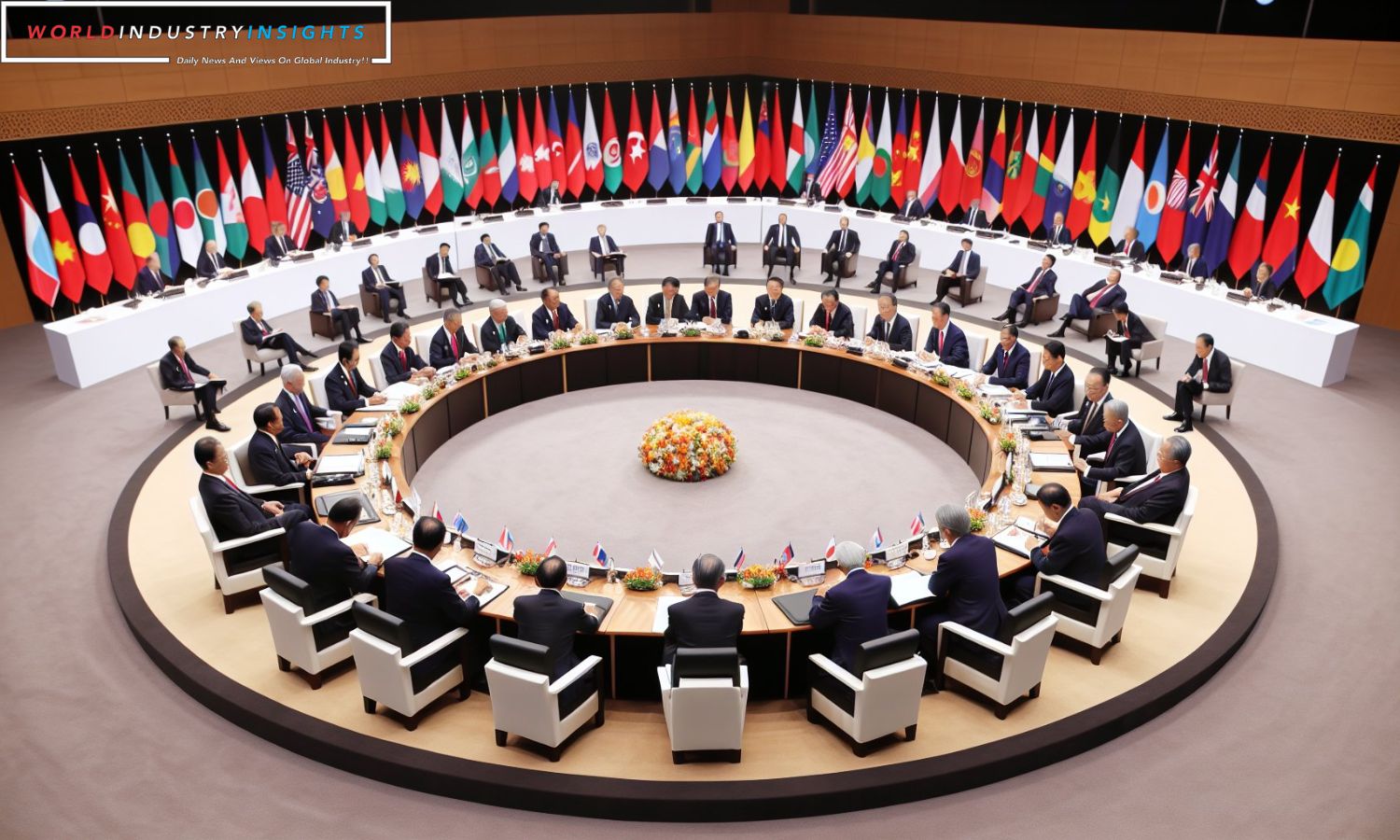APEC Summit Dynamics: Leaders from the Pacific Rim displayed notable divisions over the ongoing conflicts in Ukraine and Gaza as the two-day summit of the Asia-Pacific Economic Cooperation (APEC) forum concluded on Friday. Despite these differences, a shared commitment to the reform of the World Trade Organization (WTO) was articulated.
The summit, involving ministers and leaders from APEC member countries, was significantly influenced by the high-profile meeting on Wednesday between U.S. President Joe Biden and Chinese President Xi Jinping. The discussions aimed to alleviate rising tensions between the world’s two largest economies, a source of concern for the region.
APEC comprises 21 member countries, including Russia and Muslim-majority nations such as Indonesia and Malaysia. However, the meetings revealed persistent divisions over Russia’s involvement in the conflict in Ukraine and the ongoing Hamas-Israel war in Gaza.
In an official statement issued by the current APEC chair, the United States, echoes of last year’s declaration were evident. The statement expressed that “most” APEC members “strongly condemn aggression against Ukraine.” Notably, the leaders exchanged views on the Gaza crisis, with some expressing objections to discussing geopolitical issues within the APEC framework.
The chair’s statement revealed that some APEC leaders aligned with the messages conveyed during the joint Arab-Islamic summit in Riyadh on November 11. This summit emphasized an immediate end to military operations in Gaza, rejecting Israel’s justification for its actions against Palestinians as self-defense. Additionally, it called for a humanitarian truce and the unimpeded provision of essential goods and services to civilians in Gaza. Notably, Brunei, Indonesia, and Malaysia, in a joint statement, affirmed their support for the messages of the Riyadh summit.
Amidst these geopolitical tensions, the APEC leaders’ declaration reiterated their commitment to delivering a free, open, fair, non-discriminatory, transparent, inclusive, and predictable trade and investment environment. The leaders also expressed determination to reform the WTO, aiming for a fully functional dispute settlement system accessible to all members by 2024.
Despite the challenges posed by divisions over global conflicts, the talks between the U.S. and China provided some relief to APEC members. The Biden-Xi summit resulted in agreements to resume military-to-military communications and collaborative efforts to curb fentanyl production. While tangible progress was made, the strategic rivalry between the superpowers remains, with no major reset observed.
Also Read: CPTPP Ministers Summit: Charting a Dynamic Future in Global Trade
President Xi seemed to achieve his objectives, securing concessions from the U.S. in exchange for promises of cooperation. This easing of bilateral tensions allows for a renewed focus on economic growth and provides an opportunity to attract foreign investors who have shown a growing reluctance to engage with China.
Addressing other APEC leaders, President Biden emphasized the importance of collaboration to ensure that artificial intelligence brings positive changes, avoiding misuse that could harm workers or limit potential.
The APEC summit, therefore, served as a platform to underscore the strength of the U.S. economy and its ties to Pacific nations. However, Biden’s vision for greater regional cooperation faced challenges, particularly concerning his efforts to enhance workers’ rights.
In the backdrop of the U.S.-China tensions, much attention is drawn to the situation involving Taiwan, a democratically governed entity claimed by China. The APEC envoy from Taiwan, semiconductor magnate Morris Chang, considered the Biden-Xi summit a positive development. While informal interactions occurred between Taiwan’s envoy and U.S. leaders, there were no reported interactions with President Xi.
As the U.S. contends with China for influence, the Biden administration remains committed to negotiating an ambitious Asia trade deal within the Indo-Pacific Economic Framework. This initiative was established as a forum for engagement after President Donald Trump withdrew from a regional trade pact in 2017. However, electoral pressures and resistance to stringent commitments from some countries make the prospect of a deal uncertain, as noted by trade experts and business groups.
In conclusion, the APEC summit, marked by geopolitical tensions and economic discussions, reflects the complex dynamics of the Pacific Rim. While APEC leaders navigated through differences, the U.S.-China relationship remains central to regional stability and influence, shaping the trajectory of future engagements in the Asia-Pacific region.
Our Reader’s Queries
What happened at APEC 2023?
The APEC 2023 summit brought about some exciting outcomes, including the announcement of $200 billion worth of investments from Asia Pacific companies into the United States. Additionally, the summit saw $50 billion of private sector investments from the U.S. into APEC economies. These developments are sure to have a significant impact on the global economy and are a testament to the growing interconnectedness of the Asia Pacific region and the United States.
What is the theme of the APEC summit 2023?
The upcoming APEC 2023 summit has a powerful theme: “Creating a Resilient and Sustainable Future for All.” This theme speaks to the need for global cooperation and action to ensure that our planet and its inhabitants can thrive for generations to come. By focusing on resilience and sustainability, we can work towards a brighter future that benefits everyone. It’s an important message that we should all take to heart.
What are the key features of APEC?
In 1995, APEC member economies established a framework in Osaka, Japan to attain their objectives. This framework, also known as the ‘Three Pillars’ of APEC, focuses on three key areas of cooperation: Trade and Investment Liberalisation, Business Facilitation, and Economic and Technical Cooperation. These pillars serve as the foundation for APEC’s efforts to promote economic growth and development in the Asia-Pacific region.
Who is hosting the APEC in 2025?
The United States of America will be hosting APEC in 2023, followed by Peru in 2024 and Korea in 2025. These three countries will be taking the lead in bringing together the Asia-Pacific region to discuss economic cooperation and growth. With each country bringing its unique perspective and expertise to the table, APEC promises to be an exciting and informative event for all involved. Stay tuned for updates on the agenda and speakers for each year’s conference.


